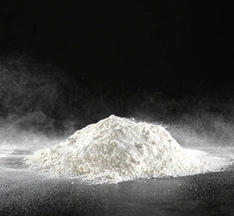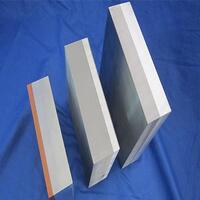1. Introduction
Just 24 hours ago, architects at the Venice Architecture Biennale unveiled a striking pavilion wrapped entirely in a self-weathering corten steel facade—igniting fresh global interest in metal clad exteriors as both sustainable and sculptural building elements. This spotlight underscores a growing trend: metal cladding isn’t just functional—it’s fashion-forward.

But what exactly does ‘metal clad‘ mean? And why are designers increasingly choosing zinc clad roofs, aluminum clad steel, or copper siding for everything from luxury homes to industrial sheds?
2. What Is Metal Clad?
The term ‘metal clad’ (or ‘metalclad’) broadly refers to any material system where one metal is bonded—mechanically, metallurgically, or through electroplating—to another to combine desirable properties like corrosion resistance, strength, conductivity, or aesthetics.
In construction, ‘metal clad wall’, ‘metal clad roof’, and ‘metal facade’ describe exterior surfaces covered with sheets or panels of metals such as steel, aluminum, zinc, or copper. In manufacturing, ‘clad metals’ might refer to layered composites like aluminum clad stainless steel used in cookware or aerospace.
3. Common Types of Clad Metals and Their Uses
Clad metal meaning varies by industry, but core combinations dominate:
- Aluminum clad steel: Combines steel’s strength with aluminum’s corrosion resistance—ideal for automotive frames and structural beams.
- Stainless clad aluminum: Offers thermal conductivity with surface durability; used in heat exchangers.
- Titanium clad: Extremely corrosion-resistant; common in chemical processing and marine environments.
- Copper-nickel clad or cupro nickel clad: Used in ship hulls and offshore platforms due to biofouling resistance.
Electroplating methods like chromium electroplating or electroless nickel create thin protective layers on base metals like mild steel plate or brass plate, enhancing wear life without full cladding.
4. Metal Clad in Architecture: From Sheds to Skyscrapers

Today’s ‘metal clad building’ ranges from utilitarian metal clad sheds to high-end steel clad houses featuring vertical standing seam metal siding or corrugated steel facade designs.
Popular architectural choices include:
- Corten steel siding: Develops a rust-like patina that stabilizes over time. Corten siding cost is higher upfront (~$8–$15/sq.ft) but requires zero maintenance long-term.
- Zinc metal siding and zinc clad dormer: Elegant, self-healing surface; often used in European-inspired modern homes.
- Colorbond standing seam and PAC Clad standing seam roof systems: Durable, recyclable, and available in dozens of colors—PAC Clad HWP and PAC Clad coping details add refined finishing touches.
- Copper siding: Ages to a distinctive green verdigris; prized for heritage and boutique projects.
These systems often use underlying steel plate or aluminum diamond tread plate for structural support, while finishes like perforated plate or diamond plate sheet add texture and function.
5. Electrical and Industrial Applications
Beyond facades, ‘metal clad wire’—including aluminum clad steel wire, cu clad wire, and aluminum clad wire—is essential in power transmission, offering strength plus conductivity.
Similarly, ‘metal clad electrical wire’ (often armored cable) is widely used in commercial buildings across Pennsylvania and beyond due to its fire and impact resistance.
In piping, ‘aluminum clad pipe insulation’ protects against moisture and mechanical damage in HVAC systems.
Industrial sectors rely on specialty plates: chrome carbide overlay for abrasion resistance, Inconel 625 weld overlay for extreme heat, and ASTM A387 alloy plate for pressure vessels.

6. Material Selection: Thickness, Grade, and Cost Considerations
Choosing the right metal plate depends on load, environment, and budget. Common gauges include 1/8 inch steel plate, 3/16 metal plate, or thick steel plate for heavy-duty bases.
Alloy choices matter too: 6061 T6 aluminum plate for machining, 316 stainless steel plate for marine exposure, or 7075 T6 clad for aerospace strength-to-weight ratios.
Prices vary widely—steel plate price starts around $0.50/lb for carbon steel but jumps for stainless steel plate grades like 316L SS plate or Inconel plate.
For DIYers searching ‘steel plate near me’ or ‘aluminum sheet for sale’, local distributors offer everything from aluminum 5052 sheet to stainless steel checker plate.
7. Sustainability and Future Trends
Metal clad systems are inherently recyclable—zinc, aluminum, and steel can be reused indefinitely without quality loss. This aligns with green building standards like LEED.
New innovations include alloy clad panels with integrated photovoltaics and nano-coated stainless metal sheet that resists graffiti and UV degradation.
As seen at this week’s Biennale, the fusion of art and engineering in metal cladding continues to redefine urban landscapes.
8. Conclusion
Whether you’re selecting corten steel plate for a dramatic facade, specifying aluminum clad stainless steel for industrial piping, or installing PAC Clad column covers on a commercial project, understanding ‘metal clad meaning’ and material options is key. With durability, design flexibility, and sustainability on its side, metal clad isn’t just a trend—it’s the future of built environments.
Our Website founded on October 17, 2012, is a high-tech enterprise committed to the research and development, production, processing, sales and technical services of ceramic relative materials such as Metal. Our products includes but not limited to Boron Carbide Ceramic Products, Boron Nitride Ceramic Products, Silicon Carbide Ceramic Products, Silicon Nitride Ceramic Products, Zirconium Dioxide Ceramic Products, etc. If you are interested, please feel free to contact us.
